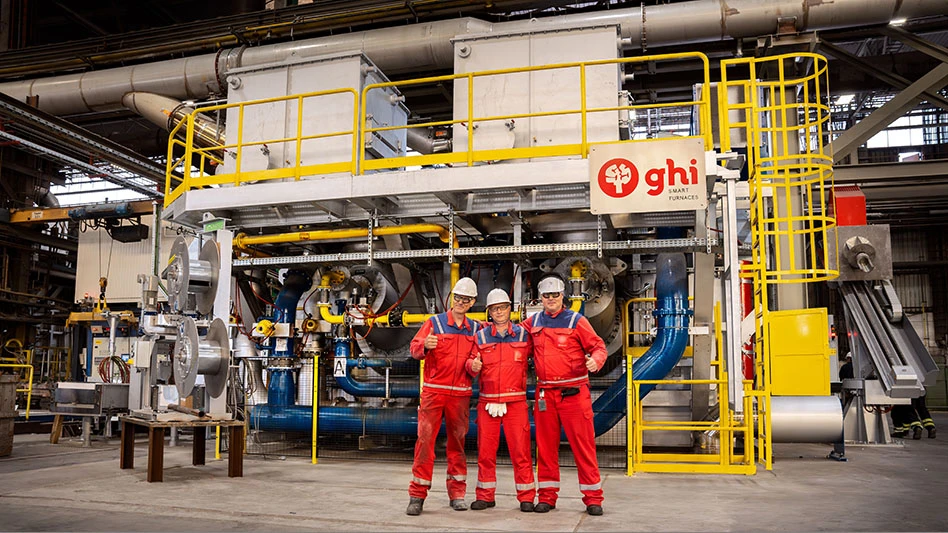
Photo by Recycling Today staff
Global demand for copper in several applications is rising, but “copper mining supply has grown by less than 2 percent per year since 2013” writes a CME analyst in a recently published report.
In an April 6 CME website post, Erik Norland, executive director and senior economist with the Chicago-based CME Group, says global sales of electrical vehicles (EVs) that surged 160 percent in 2021 are a leading factor in boosting demand for copper.
Norland writes, “Copper prices have risen 125 percent from their March 2020 [COVID 19-impacted] lows, and the red metal has been among the commodities hitting record high prices since the pandemic began.”
While high scale pricing may bring out a little more copper and brass scrap, that potential increase does not merit a mention from Norland, who focuses on the mining sector. “Over the past three decades mining output for copper grew far more slowly than for most other metals, rising just 123 percent. Over the same period, aluminum production grew by 256 percent and iron ore production rose by 257 percent,” he writes.
One factor for the mining sluggishness, Norland says, is that “the copper content of copper ore has declined steadily over time. While total discovered reserves of copper have continued to climb, the cost of extracting copper has been on the rise and a large part of that cost is energy.”
Soaring oil and gas prices costs give caution to mining investments, but they actually spur demand because of another market reaction. “The sharp rise in oil and natural gas prices in 2021 may be raising demand for copper by fueling interest in alternative technologies such as wind, solar, batteries and electric vehicles, all of which imply the use of copper either directly or indirectly,” he says.
Norland continues, “If EV sales continue to grow at this fast pace, increasing their market share relative to combustion engine-powered cars, it implies potentially strong demand growth for copper and other metals. The cost of EVs has been falling rapidly, and EVs may become less expensive than vehicles powered by combustion engines by the second half of the 2020s.”
Car buyers in China and Europe are particularly fond of EVs, he says. In the United States, EV sales might be slower, but another factor is prompting increased demand.
“Between December 2019 and December 2021, U.S. consumers spent 18 percent more on manufactured goods but only 6 percent more on services,” he writes. “Around the world, lockdowns and pandemic-related restrictions made it difficult for consumers to spend money on experiences like travel, dining out and entertainment. Instead, they shifted to purchasing more manufactured goods, including consumer electronics and other items that involve significant copper content.”
That particular prompt may be on the downward curve, but the overall message from Norland is that the historically high price of copper seems to be underpinned by legitimate supply and demand factors.
Latest from Recycling Today
- ReElement, Posco partner to develop rare earth, magnet supply chain
- Comau to take part in EU’s Reinforce project
- Sustainable packaging: How do we get there?
- ReMA accepts Lifetime Achievement nominations
- ExxonMobil will add to chemical recycling capacity
- ESAB unveils new cutting torch models
- Celsa UK assets sold to Czech investment fund
- EPA releases ‘National Strategy to Prevent Plastic Pollution’





